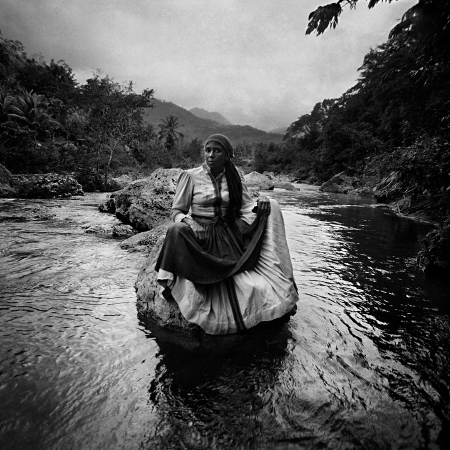INFORMATION - PEOPLE

“I have a right to reinterpret the Last Supper as Leonardo da Vinci created the Last Supper with people who look like him.The hoopla and the fury are because I’m a black female. It’s about me having nothing to hide.”
In 1995, alongside Fo Wilson and Tony Cokes, she created the Negro Art Collective which aimed to fight incorrect generalisations about African Americans. This involved a poster campaign in Manhattan, Brooklyn and Los Angeles which was inspired by her 5 year old son asking her, ‘Why are all black people bad?’. The campaign included this quote and others that intended to challenge what many viewers are brought up believing. One of the most famous was the Charles Murray quote which, with their narration, read;
“Surprise, Surprise, ‘in raw numbers, European-American whites are the ethnic group with the most people in poverty, most illegitimate children, most people on welfare, most unemployed men, and most arrests for serious crimes.’ Surprised.”
Cox also engages more directly with the historical issues of the . In the image ‘Hot-en-tot’ Cox poses as Saartje Baartman, also known as the ‘Hottentot Venus’. Baartman was a South African slave who, in the 19th century, was exhibited around Europe by Dutch colonisers as part of a ‘freak show’. This was because of her physical appearance which did not correspond to the norms of Western society; her protruding buttocks and enlarged vulva. Baartman was subject to humiliating parades and medical inspections and was used to justify and maintain the imagery of the ‘Other’. In this era of racial hierarchies Nott and Gliddon even based a whole ‘species of mankind’ upon her within their pseudo-scientific study of ‘race’. Cox presents her ‘Hot-en-tot’ looking directly at the viewer, so that they must face Baartman and face what happened to her.
Cox depicted another historical figure of international importance in her 2004 series Queen Nanny of the Maroons. This Jamaican national heroine from the 18th century led a rebellion against the British seeking freedom of the enslaved. This body of work was exhibited in the Jamaican Biennial in 2007 where it won the Aaron Matalon Award. In these pieces it is clear to see that the history of the is a central concern and influence on Cox’s work. This idea of using particular historical figures to confront the issue of transatlantic slavery contrasts that of artists such as Kara Walker, who chooses to depict anonymous characters in their everyday life. However, both use the realities and legacies of transatlantic slavery to reflect on and inform their responses to aspects of race relations in contemporary society.
In response to controversy surrounding her artwork, Cox defends her actions; “If you don’t ask you don’t get and then you get kicked to the curb”. She also stated “I have a responsibility to speak out—there’s something that I feel I need to respond to in this world. An African-American woman putting herself in a position of empowerment seems to be a national threat. Well, I’m saying: I’m not taking a backseat. I’m going to sit at the head of the table”. She resents that people would assume she is an ‘angry Negro’, this assumption and reaction to strong black female characters perhaps says more about the viewer than the artist. Cox’s aim is clear: to empower minorities and create progressive debate through her art.
Cox’s work is unusual in its approach. It produces bold images of black individuals celebrating positive histories of the black diaspora and tackling the legacies of negative or stereotypical images. This aspect of Cox’s work would have corresponded with the aims of ‘leaders’. However, Cox’s approach in readily confronting the gritty aspects of life as experienced by women and black Americans is reminiscent of the work of writer and poet Claude McKay. His subject matter and direct approach split audiences bringing much success and praise from many quarters, but also disapproval and critique from contemporaries – most notably W.E.B Du Bois. Considering the controversy and debate surrounding Cox’s work, nearly a century after the , art which explores the intersections of ‘race’, gender, and the realities of society is still unnerving and unsettling for many. Cox continues to exhibit and is currently at work on her next series of photographs.
Contributed: HGF
| Continue the debate on Renee Cox |
Return to People home